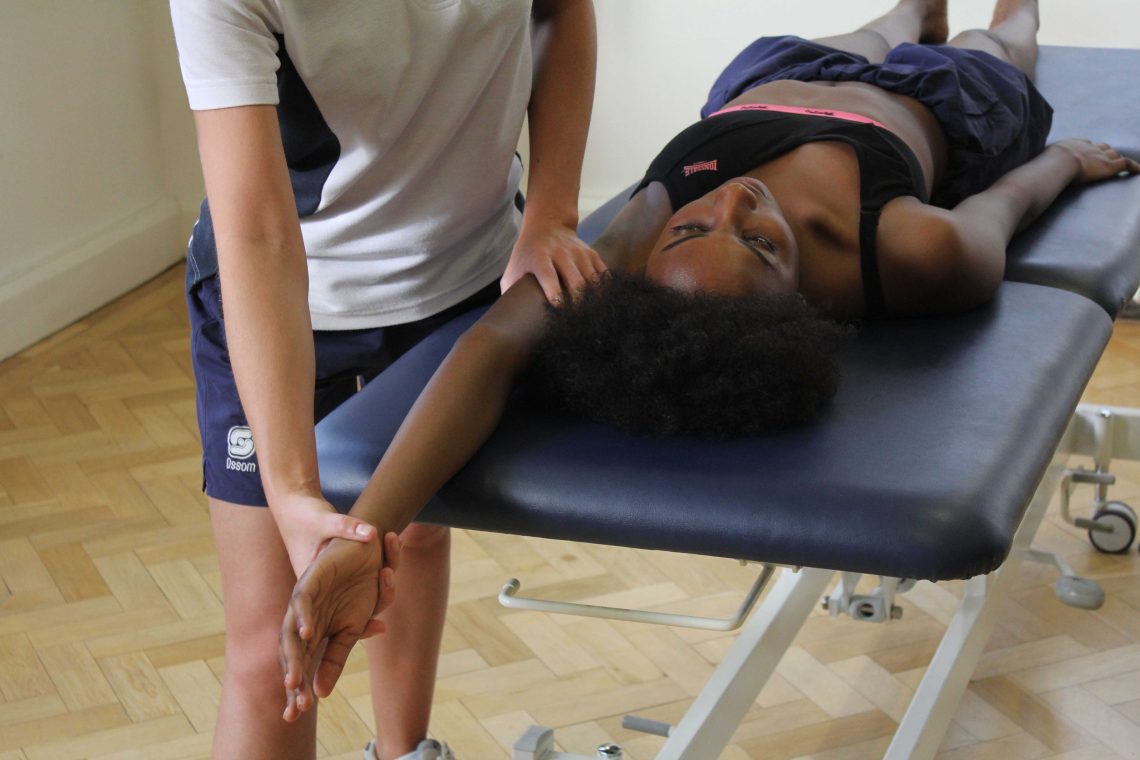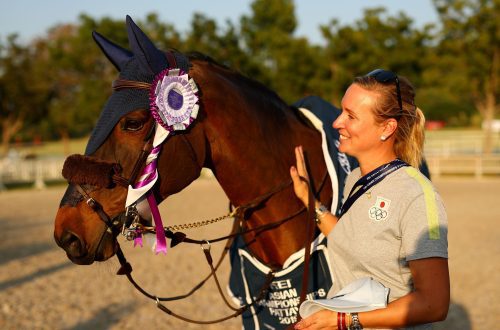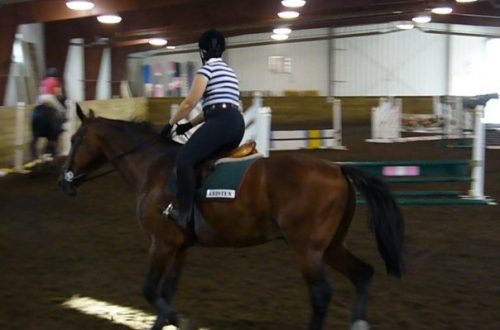
We remove the stiffness of the muscles in the girth area (sports massage)
We remove the stiffness of the muscles in the girth area (sports massage)
Tightening of the muscles in the girth area can cause discomfort to the horse and therefore affect the quality of the horse’s work. I want to tell you about how to identify the relevant problem and solve it.
Has your horse never had bad habits under the saddle, was responsive and cooperative, but suddenly changed – began to flatten his ears and back away when you ask him to go forward? Does she refuse to canter and is it difficult to get her off the right foot? She’s not limping, but can you see that there’s something wrong with her? What is going on?
The posterior pectoral is one of three pectoral muscles that help move the front leg of the horse. I point to the top of the muscle, which expands and goes down.
Although there may be various causes behind all of the above symptoms, I can say from my experience as an equine sports massage therapist that the most common cause is girth tightness. Below I will tell you how to identify and correct this problem using sports massage techniques.
Problem
Among the three pectoral muscles, one should highlight Posterior Pectoralto help move the front leg. This flat triangular muscle lies on the chest behind the front leg of the horse. It extends from a point on the dorsum of the humerus (the large bone of the forelimb below the shoulder) to points along her ribcage and sternum (sternum) on the midline of her abdomen. When this muscle contracts, it pulls the leg backward. Other muscles contract to move the limb forward, but the leg cannot swing forward freely if Posterior Pectoral does not relax to let her go.
Simple muscle stiffness is one of the most common reasons why a horse refuses to work. If enslaved Posterior Pectoral, it does not allow the legs to move freely. Forward movement becomes blocked. The movement of the corresponding hind limb may also be affected, as the horse’s forehand and hindquarters always move in sync. The horse may show signs of “springing up”, object while saddling or mounting, or move in short, hurried steps. In extreme cases, the horse may even stand on the candle to resist moving forward. Often, however, the symptoms are not so pronounced.
Because the horse feels discomfort moving the leg forward, he may:
- having difficulty going up or down hills;
- reluctant to gallop with the right foot or to baptize;
- hang your legs over an obstacle;
- experience difficulties while overcoming obstacles that force her to reach out in front (wide obstacles);
- show reluctance when asked for a raise or during changes in tempo; as well as
- will tire quickly because she must work against enslavement in order to move forward.
If a horse shows one or more of these signs, it will not be difficult for you to find out if the Posterior Pectoral. Just do this simple check from each side: stand at the horse’s shoulder and place your palm (flat) on the area behind the elbow. This area is quite sensitive, so be aware that the horse may try to walk away or even hit or bite, especially if it hurts.
If the muscle is relaxed, the area will feel smooth and soft. If it is stiff or spasmodic, you will feel a knot – an area that looks like a small hot dog – across the muscle (perpendicular to the ground).
We are working on
The muscle can be relaxed with a simple massage technique. Standing at the horse’s shoulder, lay the hand flat on its side, just behind the elbow. The hand should be relaxed. Using gentle, moderate pressure with the entire palm or the base of the palm, gently work along the muscle at a distance of about one and a half palm lengths. The horse will tell you by laying his ears back, trying to get away, or giving another signal if the pressure is too strong. As a rule, the knot softens in just a few minutes. The muscle will then become soft and supple, and the horse will relax.
To find tightness and spasm in the Posterior Pectoral, I stand at the horse’s shoulder and use a flat hand to press the area behind the elbow, moving down towards the ground. I feel either soft muscle tissue under my palm, or a small bundle of muscle, reminiscent of a hot dog.
After the massage, you can do exercises that complete the procedure by activating and lengthening the muscle fibers. For this, it will be especially useful to work on the canter. To really fix the problem, you will need to figure out what is causing the tension.
A properly positioned saddle sits behind the horse’s shoulder blade and leaves space between the front legs and the girth, allowing the horse to make full use of its pectoral muscle and shoulder.
Below – six main causes, and remedy options for each:
1. Placement of the saddle: Incorrect saddle placement is the most common cause of entanglement. Often the saddle is placed too far forward, so that the girth passes right behind the elbow. The pressure of the girth presses the muscles and causes spasms.
Correction: since the structure of each horse is individual, it is difficult to come up with strict rules that allow the only correct position of the saddle and girth. But you are likely to be right if you place the saddle so that it does not sit on the shoulder blade and interfere with the work of the shoulders, and that there is space between the girth and the front leg.
2. Girth length: a short girth (similar to those used in dressage) can tug Posterior Pectoral, especially if the buckles line up directly above the muscle.
Correction: Try working with a longer girth and see if the problem stops.
3. Girth type: a narrow girth creates more concentrated pressure over a smaller area than a wide girth and is more likely to cause problems.
Correction: try a wider girth.
A good choice, especially for schooling, is a cloth girth. I think that with it the horse will be more comfortable than with leather. Elastic bands at one end of the girth are also a good choice. The elastic bands on both ends can sometimes allow the saddle to move.
4. Job: Repeating the same movement over and over again (such as endless circles or endless pace extensions) can lead to tightness in the girth area as well as in other muscles.
Correction: often change the type of activity, change gaits and directions.
5. Priming: Working in deep ground tires the horse and contributes to muscle tension.
Correction: Limit work in deep ground.
6. Hidden problem: sometimes the real reason is “hiding” not at all in the girth area. For example, your horse may have a lower limb or hoof problem. The horse will strain Posterior Pectoralto protect the injured leg by limiting the range of motion. The muscle then spasms. In such cases, the knot does not go away after a simple massage as quickly, and the problem is not eliminated by changes in working methods or a change in ammunition.
Correction: there will be no easy way here – you will need to contact your veterinarian and / or farrier.
Correcting the root cause of stiffness should allow your horse to move freely.
In addition, I can help her and some simple stretches and changes in warm-up mode.
To massage the stiff Posterior Pectoral, press with a flat palm in downward motions towards the ground. If the horse tries to walk away or reacts negatively, you are probably pushing too hard. Try again, but more gently. If the horse continues to show signs of anxiety, see a professional massage therapist.
- Before you sit in the saddle, stretch your horse’s pecs by alternately pulling his front legs forward. Grab your foot by the wrist joint, lift it up so that your forearm is almost parallel to the ground, and gently pull your foot forward. (Don’t grab or pull at the pastern. This stretches the tendons in the leg.) Repeat with the other leg. If the horse pinched Posterior Pectoral in response to tightening the girth, this will help her relax the muscles. Do this stretch once or twice on each side, depending on how patient your horse is.
- Warm up your horse by doing work that encourages him to lengthen and stretch these muscles. Kenter is the most suitable exercise for lengthening. (This is why the trot always feels more comfortable to the rider after the canter.) Walking up the hills can also be a good solution.
- When you unsaddle your horse after work, repeat the stretch described above. This will help release any lingering tightness.
Having defined serfdom Posterior Pectoral and by working on it, you can help the horse move more freely and comfortably.
Jo Ann Wilson (source); пerevod Valeria Smirnova.





